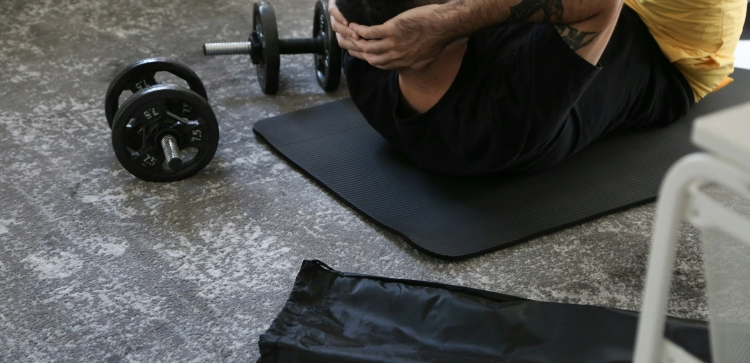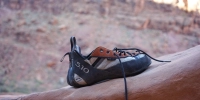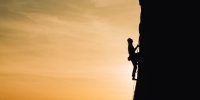Yoga For Climbers: Strength, Flexibility & Mental Edge

Climbing is a dance of strength, balance, and precision, demanding a profound connection between the body and mind. While dedicated climbing training is essential, many climbers are discovering an invaluable complementary practice: yoga. Far from being just a stretching routine, yoga is a holistic discipline that systematically trains the body for climbing-specific demands while simultaneously cultivating mental fortitude and body awareness. This comprehensive guide explores the powerful synergy between yoga and climbing, delving into how yoga can enhance muscle development, boost flexibility, build endurance, and sharpen the mental game, ultimately helping you unleash your full potential on the rock or in the gym.
- The Synergy Of Yoga And Climbing: A Holistic Approach
- Enhancing Flexibility And Range Of Motion
- Downward-Facing Dog (Adho Mukha Svanasana)
- Pigeon Pose (Eka Pada Rajakapotasana)
- Thread The Needle Pose (Urdhva Mukha Pasasana)
- Building Functional Strength
- Boat Pose (Paripurna Navasana)
- Plank Pose (Phalakasana) & Side Plank
- Forearm Plank
- Warrior II (Virabhadrasana II)
- Dolphin Pose (Ardha Pincha Mayurasana)
- Crow Pose (Bakasana)
- Improving Endurance And Stamina
- Heightening Body Awareness And Proprioception
- Cultivating Mental Focus And Calm
- Integrating Yoga Into Your Climbing Routine: Practical How-To
- Pre-Climb Warm-up (Dynamic Yoga Flows)
- Post-Climb Cool-down (Static & Restorative Stretches)
- Dedicated Yoga Sessions (1-3 Times Per Week)
- Continuous Learning And Progression:
- Conclusion
- FAQ: Yoga For Climbers
- Can Yoga Build Muscle For Climbing?
- How Does Yoga Improve Climbing Flexibility?
- Does Yoga Help With Climbing Strength Or Just Flexibility?
- Can Yoga Help Prevent Climbing Injuries?
- What Types Of Yoga Are Best For Climbers?
- How Often Should Climbers Practice Yoga?
- Does Yoga Improve Mental Focus For Climbing?
- Is Yoga A Good Standalone Training For Climbing?
The Synergy of Yoga and Climbing: A Holistic Approach
Yoga, as a holistic practice, engages various muscle groups throughout the body, promoting overall physical fitness and strength in a balanced manner. While climbing predominantly targets specific muscles in the arms, shoulders, and back, yoga takes a comprehensive approach, involving not only these upper body muscles but also the core, legs, and even smaller stabilizing muscles. This well-rounded muscle development from yoga can significantly enhance your climbing prowess and help you conquer challenging routes with greater ease.
The balanced and full-body nature of yoga practice helps to:
- Strengthen the core, which is central to all climbing movements.
- Improve flexibility, enabling a greater range of motion on the wall.
- Develop overall body control and awareness, crucial for precise movement.
- Build endurance through sustained holds and controlled breathing.
- Cultivate mental focus and calm under pressure.
Enhancing Flexibility and Range of Motion
Climbing often demands extreme ranges of motion, whether reaching for a distant hold, performing a high step, or executing a deep drop-knee. Yoga excels at systematically increasing flexibility, leading to a broader range of motion and significantly reducing the risk of strains and injuries.
- Targeted Stretching: Yoga poses specifically stretch muscles commonly used in climbing, such as hamstrings, hip flexors, shoulders, and back, improving joint mobility. Here are some key poses and how to perform them:
Downward-Facing Dog (Adho Mukha Svanasana)
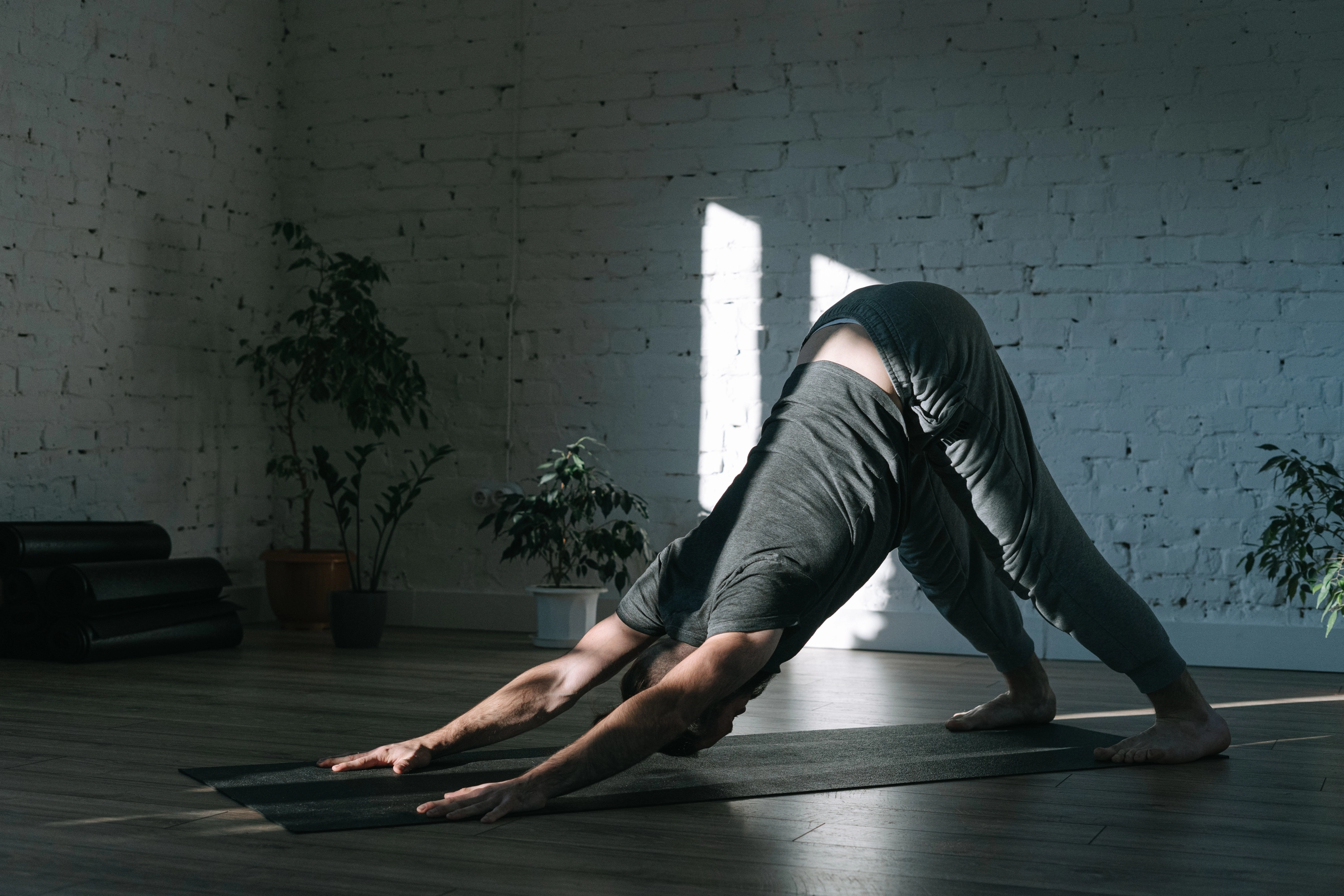
-
How to do it: Begin on your hands and knees with your wrists under your shoulders and knees under your hips. Spread your fingers wide, press through your palms, and tuck your toes. Exhale as you lift your hips high towards the sky, forming an inverted V-shape with your body. Straighten your legs as much as comfortable, aiming to bring your heels towards the mat, though a slight bend in the knees is fine. Keep your head relaxed between your arms.
-
Benefits for climbers: This foundational pose powerfully stretches the hamstrings, calves, and shoulders, which often become tight from climbing. It also strengthens the arms and legs, helps to decompress the spine, and elongates the back, counteracting the hunched posture often adopted during climbing.
Pigeon Pose (Eka Pada Rajakapotasana)

-
How to do it: From Downward-Facing Dog, bring your right knee forward towards your right wrist, placing your shin parallel (or as close as comfortable) to the front edge of the mat. Extend your left leg straight back behind you, keeping your hips relatively square to the front. You can stay upright on your hands or fold forward over your front leg. Repeat on the other side.
-
Benefits for climbers: This is a profound hip opener, crucial for climbers who need increased range of motion for high steps, dynamic rock-overs, or deep flagging positions. It helps alleviate tightness in the hip flexors and glutes, which can restrict movement and lead to imbalances.
Thread the Needle Pose (Urdhva Mukha Pasasana)
-
How to do it: Start on hands and knees. Inhale and reach your right arm straight up to the sky, opening your chest. On an exhale, "thread" your right arm underneath your left armpit, bringing your right shoulder and the side of your head to the mat. Your left hand can stay where it is or extend forward for a deeper stretch. Repeat on the other side.
-
Benefits for climbers: Excellent for opening the shoulders and upper back, areas that can become tight and rounded from repetitive pulling and gripping. This pose improves reach, reduces tension, and increases thoracic spine mobility, allowing for more fluid movement and less strain when reaching for distant holds.
-
Increased Reach: Greater flexibility allows for more efficient and longer reaches, minimizing the need for multiple, less-efficient adjustments on a route.
-
Fluid Movement: Improved flexibility contributes to more fluid, graceful movements on the wall, conserving energy.
Building Functional Strength
While yoga might not involve heavy lifting, it is highly effective at building functional strength, particularly in the core, shoulders, and stabilizing muscles—all vital for climbing.
- Core Strength: A strong core is the foundation of climbing. Yoga poses engage deep abdominal and back muscles, enhancing stability, balance, and the ability to transfer power from your lower to upper body.
Boat Pose (Paripurna Navasana)
-
How to do it: Sit on your sit bones with knees bent and feet flat on the floor. Lean back slightly, engaging your core, and lift your feet off the ground so your shins are parallel to the floor. Extend your arms forward, parallel to the floor. For more challenge, straighten your legs into a V-shape.
-
Benefits for climbers: Engages the deep abdominal muscles and hip flexors, which are crucial for maintaining body tension on overhanging terrain, executing precise core-driven movements, and bringing your feet up high to holds.
Plank Pose (Phalakasana) & Side Plank
-
How to do it (Plank): Start in a push-up position, ensuring your hands are directly under your shoulders and your body forms a straight line from the crown of your head to your heels. Engage your core by pulling your belly button towards your spine.
-
How to do it (Side Plank): From a high plank, shift your weight onto one hand, stack your feet, and lift your hips high, extending the other arm directly to the sky.
-
Benefits for climbers: Strengthens the entire core, including obliques and transverse abdominis, vital for stability, preventing unwanted "barn-dooring" swings, and transferring power throughout your body on the wall. They also build endurance in the supporting muscles.
Forearm Plank
-
How to do it: Similar to a high plank, but you rest on your forearms instead of your hands, with your elbows directly under your shoulders. Maintain a straight line from head to heels, engaging your core.
-
Benefits for climbers: Builds endurance in core and shoulders, excellent for static strength and stability required for sustained holds.
-
Shoulder Stability: Yoga strengthens the rotator cuff and scapular stabilizers, preventing injuries and improving shoulder health crucial for hanging and pulling.
Warrior II (Virabhadrasana II)
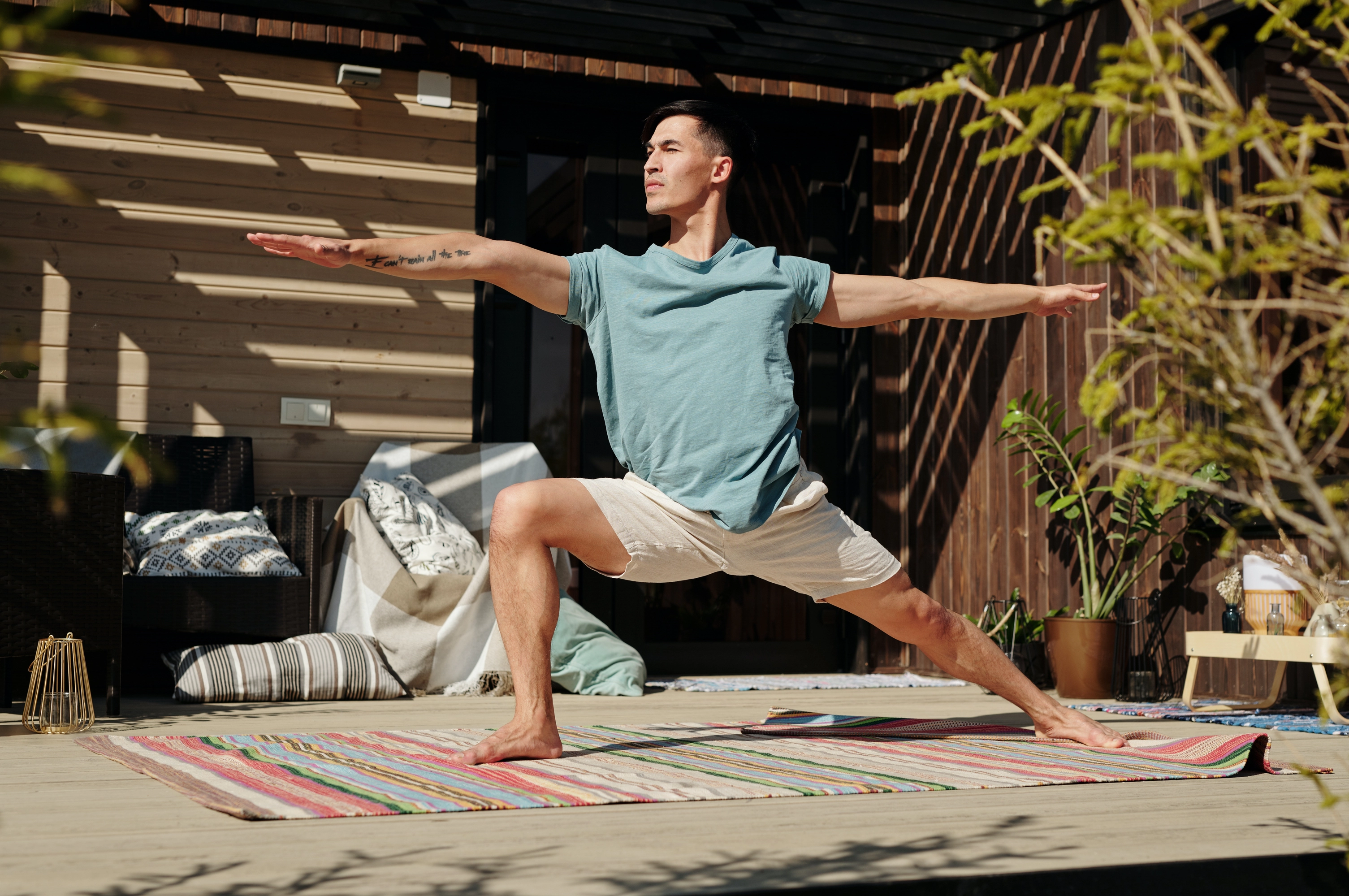
-
How to do it: Step one foot forward, bending the front knee directly over your ankle (90-degree angle). Your back leg is straight, with your back foot parallel to the back edge of your mat. Extend your arms out to the sides at shoulder height, gazing over your front hand. This is a powerful standing pose that targets the legs, hips, and shoulders, encouraging stability and strength in the lower body while opening the chest and shoulders.
-
Benefits for climbers: This pose strengthens the legs and improves balance, making it beneficial for stability during challenging climbing moves. It also opens the hip flexors, which tend to become tight from repetitive climbing movements, aiding in flexibility and increased range of motion. Furthermore, it strengthens the shoulders and improves their stability and endurance for holding positions and extended reaches.
Dolphin Pose (Ardha Pincha Mayurasana)
-
How to do it: Start on hands and knees, then lower onto your forearms, pressing your palms together (or keeping them parallel) and ensuring your elbows are directly under your shoulders. Lift your hips high towards the sky, similar to Downward-Facing Dog, and you can keep your knees bent or straighten your legs.
-
Benefits for climbers: This pose powerfully strengthens the shoulders, arms, and upper back, building the foundational strength needed for overhead movements, maintaining control during difficult reaches, and enhancing overall pulling power. It's a great preparation for inversions and builds incredible shoulder stability.
-
Grip and Forearm Endurance: Many yoga poses involve bearing weight on your hands, indirectly strengthening wrists and forearms.
Crow Pose (Bakasana)
-
How to do it: Begin in a squat position. Place your hands shoulder-width apart on the floor in front of you, fingers spread wide. Lean forward, placing your knees onto your upper arms (or as high as comfortable). Shift your weight into your hands, lifting your feet off the ground, and balance.
-
Benefits for climbers: This arm balance builds significant wrist and forearm strength and endurance, directly applicable to gripping and maintaining control on holds. It also strongly engages the core and improves overall body balance and proprioception.
Improving Endurance and Stamina
Yoga's emphasis on sustained holds and controlled breathing directly translates to increased endurance on the climbing wall.
-
Sustained Holds: Holding challenging yoga poses for extended periods builds muscular endurance, mirroring the sustained tension required during climbing.
-
Controlled Breathing (Pranayama): Yoga teaches conscious breathing techniques that improve lung capacity and help manage exertion and anxiety on the wall. This can help climbers develop stamina and maintain composure during demanding sequences.
Heightening Body Awareness and Proprioception
Yoga fosters a deep connection between the body and mind, enhancing proprioception (the sense of your body's position in space) and interoception (awareness of internal bodily states).
-
Precise Movement: Increased body awareness allows for more precise foot placements, efficient weight transfers, and better understanding of how your body moves over the rock.
-
Injury Prevention: By being more attuned to your body's signals, you can identify and address imbalances or potential areas of strain before they lead to injury.
-
Mental Connection: This awareness helps climbers understand their full potential and limitations, leading to smarter, more intuitive climbing.
Cultivating Mental Focus and Calm
Climbing is as much a mental challenge as a physical one, demanding intense focus, problem-solving, and the ability to manage fear and frustration. Yoga provides powerful tools for mental conditioning.
-
Mindfulness and Concentration: The practice of focusing on breath and movement in yoga cultivates deep concentration, helping climbers stay present and focused on the next move, even in high-stress situations.
-
Stress Reduction: Yoga's calming effects and breathing exercises can significantly reduce anxiety and fear of falling, allowing for more confident and fluid climbing.
-
Visualization: Many yoga practitioners use visualization, which can be applied to climbing to mentally rehearse sequences and build confidence.
Integrating Yoga into Your Climbing Routine: Practical How-To
To unlock the full benefits of yoga for your climbing, consistent and targeted integration into your overall fitness regimen is essential. It's not about replacing climbing, but complementing it.
Pre-Climb Warm-up (Dynamic Yoga Flows)
-
Purpose: To gradually increase heart rate, warm up muscles and joints, improve blood flow, and prepare the body for dynamic movement. This helps prevent strains and optimizes performance.
-
How-to: Dedicate 5-10 minutes before your climbing session. Focus on gentle, flowing movements rather than deep static stretches.
-
Cat-Cow (Marjaryasana-Bitilasana): On hands and knees, arch your back on inhale (Cow) and round your spine on exhale (Cat). Great for spinal mobility.
-
Sun Salutation variations (Surya Namaskar): A series of flowing poses (e.g., Mountain Pose, Forward Fold, Plank, Cobra, Downward Dog) that dynamically warm up the entire body. You can modify to suit your energy levels.
-
Gentle Hip Circles, Torso Twists, Leg Swings: Controlled movements to activate major climbing muscle groups.
-
Post-Climb Cool-down (Static & Restorative Stretches)
-
Purpose: To gently lengthen muscles that have been shortened and tightened during climbing, improve flexibility, and aid in muscle recovery. This helps reduce soreness and improve long-term range of motion.
-
How-to: Spend 10-15 minutes immediately after your climbing session. Hold each stretch for 20-30 seconds, breathing deeply into the stretch.
-
Supine Spinal Twist (Supta Matsyendrasana): Lie on your back, extend one leg, bend the other knee and let it fall across your body for a spinal twist, keeping shoulders on the ground. Releases tension in the back and hips.
-
Reclined Butterfly (Supta Baddha Konasana): Lie on your back, bring the soles of your feet together, and let your knees fall open to the sides. Great for hip opening, relieving tightness from high steps.
-
Legs Up the Wall (Viparita Karani): Sit with your side against a wall, swing your legs up the wall, and lie on your back. Restorative, helps drain lactic acid, and gently stretches hamstrings.
-
Chest and Shoulder Openers: Use a foam roller or simply interlace hands behind your back to open the chest and stretch lats/shoulders that get tight from pulling.
-
Dedicated Yoga Sessions (1-3 times per week)
-
Purpose: To systematically build foundational strength, develop deeper flexibility, enhance body awareness, and cultivate mental discipline beyond what's possible in a short warm-up/cool-down.
-
How-to: Schedule these sessions on non-climbing days to allow for focused practice and recovery.
-
Choose a Style: Hatha or Vinyasa yoga are excellent for building general strength, flexibility, and flow. Yin yoga targets deeper connective tissues for long-term flexibility gains. Restorative yoga can also be beneficial for deep recovery.
-
Focus on Balanced Practice: Ensure your sessions include poses that strengthen your core, shoulders, and legs, as well as stretches that target your hips, hamstrings, and chest/shoulders.
-
Listen to Your Body: Pay attention to areas of tightness or weakness specific to your climbing. If your hips are tight, incorporate more hip openers. If your shoulders feel unstable, focus on poses that build shoulder girdle strength.
-
Continuous Learning and Progression:
-
Seek Qualified Instructors: If possible, take classes with instructors knowledgeable about anatomy or sports-specific needs.
-
Consistency Over Intensity: Regular, even short, yoga practice will yield far greater benefits than infrequent, overly intense sessions.
-
Adapt to Your Needs: As your climbing and yoga practices evolve, continually assess your body's needs and adjust your yoga routine accordingly.
Conclusion
Yoga is more than just a supplementary activity for climbers; it's a transformative practice that offers profound benefits for physical performance, mental resilience, and injury prevention. By systematically enhancing flexibility, building functional strength in crucial muscle groups (especially the core and shoulders), improving endurance through breath control, and heightening body awareness, yoga empowers climbers to move with greater efficiency, control, and confidence. Embrace the power of yoga, and watch as you not only climb harder and smarter but also experience a deeper, more mindful connection with every ascent.
FAQ: Yoga for Climbers
Can yoga build muscle for climbing?
Yes, yoga can build functional muscle relevant to climbing, particularly in the core, shoulders, and stabilizing muscles. While it doesn't involve heavy lifting, the sustained isometric contractions and bodyweight movements in yoga strengthen the muscles used for balance, stability, and control on the wall, complementing the pulling muscles developed through climbing.
How does yoga improve climbing flexibility?
Yoga improves climbing flexibility by targeting and stretching key muscle groups that often become tight in climbers (like hip flexors, hamstrings, and chest/sholders). Poses like Downward Dog, Pigeon Pose, and various twists increase range of motion, allowing climbers to reach further, utilize high steps, and adopt more efficient body positions.
Does yoga help with climbing strength or just flexibility?
Yoga helps with both. While renowned for flexibility, it also significantly builds functional strength, particularly in the core, shoulders, and smaller stabilizing muscles. Many poses require holding your body weight against gravity, which strengthens the muscles used for balance, body tension, and controlled movements in climbing.
Can yoga help prevent climbing injuries?
Absolutely. Yoga is highly effective for injury prevention in climbing by improving flexibility, correcting muscle imbalances, strengthening connective tissues, and enhancing body awareness. This reduces strain on joints and muscles, making them more resilient to the repetitive stresses of climbing.
What types of yoga are best for climbers?
Hatha, Vinyasa, and Yin yoga are often recommended. Hatha and Vinyasa focus on building strength, flexibility, and flow. Yin yoga targets deeper connective tissues, improving long-term flexibility. Restorative yoga can also be beneficial for recovery.
How often should climbers practice yoga?
Incorporating 1-3 dedicated yoga sessions per week on non-climbing days is beneficial. Additionally, using dynamic yoga-inspired stretches for warm-ups (5-10 minutes) before climbing and static/restorative stretches for cool-downs (10-15 minutes) after climbing sessions is highly recommended.
Does yoga improve mental focus for climbing?
Yes, yoga's emphasis on breathwork (pranayama) and mindfulness cultivates deep concentration and reduces anxiety. This helps climbers maintain composure, focus on the immediate task, and manage fear or frustration on challenging routes.
Is yoga a good standalone training for climbing?
While highly beneficial, yoga is best viewed as a complementary training for climbing, not a standalone replacement. It excels at building flexibility, core strength, balance, and mental fortitude. For climbing-specific power and finger strength, direct climbing, bouldering, and targeted climbing-specific training are still necessary.


